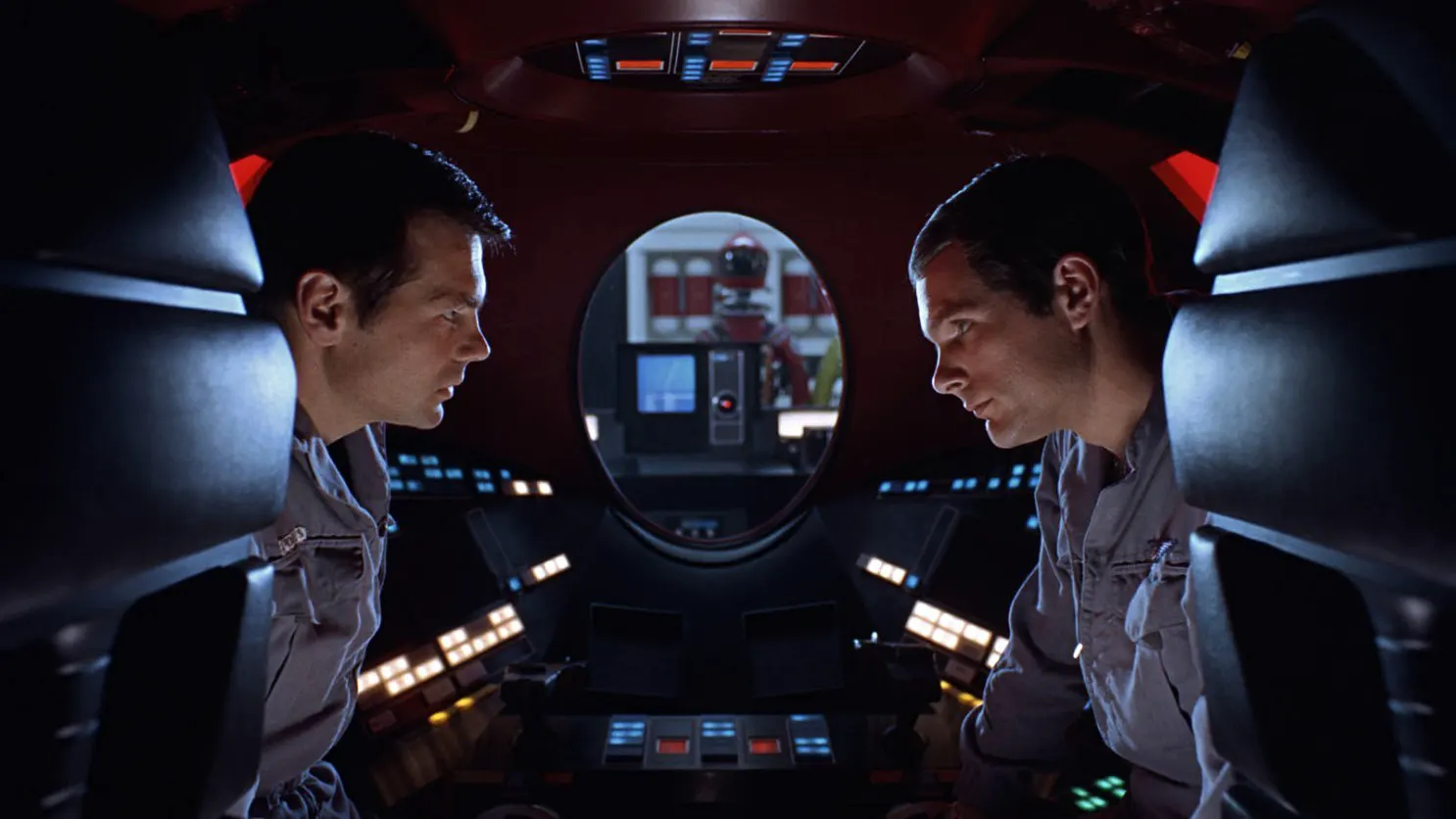Stanley Kubrick's Classic Sci-Fi Movie
2001 A Space Odyssey is a monumental movie, a classic and a tent pole within the oeuvre of Stanley Kubrick. What it is not, is dramatic. It is primarily philosophical and poetic.
FOUR PARTS
Kubrick wanted us to find our own interpretation of the film. For me, the first chapter
The Dawn of Man shows metaphorically how the awakening of human self-consciousness introduces war within the species.
The moon sequence
TMA-1 is all about visual beauty with its iconic image of the rotating space ship, wonderful production design and an amazing feel for realism. This is not something you watch on your iPad. Narratively this part runs on mystery: “What is going on at the moon base?”
The heart of the film is
Jupiter mission. For me it epitomizes Stanley Kubrick's dark vision of the future. This is where my chosen movie moment sits. We'll get back to this in a minute.
The last part is the somewhat controversial 'hallucinatory trip' sequence. A non-narrative audio-visual experience that lasts longer than contemporary audiences would bare to watch.
DRAMATIC IRONY
Jupiter Mission introduces the astronauts' doubts about the allegedly foolproof computer system. Because they don't trust HAL any longer, the men enter a space pod to avoid being overheard.
The instant classic movie moment occurs when we see HAL effectively lip-reading the astronauts. The camera goes back and forth between the mouths of the men.
This moment sent shivers down my spine. The computer outsmarts the humans, he has malicious intent, confirming that – most important of all - he has emotions.
Because we are watching the two astronauts silently and they are not aware, we are placed within the POV of the computer. Kubrick creates a powerful moment of Dramatic Irony, i.e. the audience has important information that the characters don't.

WHAT DOES IT MEAN?
In this split second of realization, Kubrick makes an extremely powerful statement. Some claim it is a warning about the power of computers but I believe it goes further. The strongest cinematic moments are never to be read literally. Much like the rest of the movie works on a metaphorical level, for me the HAL9000 sequence is not about computers but about the systems running our lives; the government, the media, corporations etc.
In only a few seconds of purely visual cinema, Stanley Kubrick instills a great deal of unrest on his audience. This moment of dramatic irony is at the same time the start of what will be the most dramatic sequence in the entire movie: the battle between our main character and the system that is running his life.
As screenwriters, I believe we can learn from this movie moment. If you manage to write a crucial story point in a purely visual way, it stands a better chance of being remembered by the audience.
Karel Segers
Karel Segers wrote his first produced screenplay at age 17. Today he is a story analyst, script editor and producer with experience in rights acquisition, script development and production. His
screenwriting classes have trained writers in Australia, Europe, Asia and the Middle East, and his clients include international award-winning filmmakers as well as three Academy Award nominees.
Karel is the founder of
The Story Department and he ranks in the world's Top 10 of most influential people for screenwriting on Twitter.